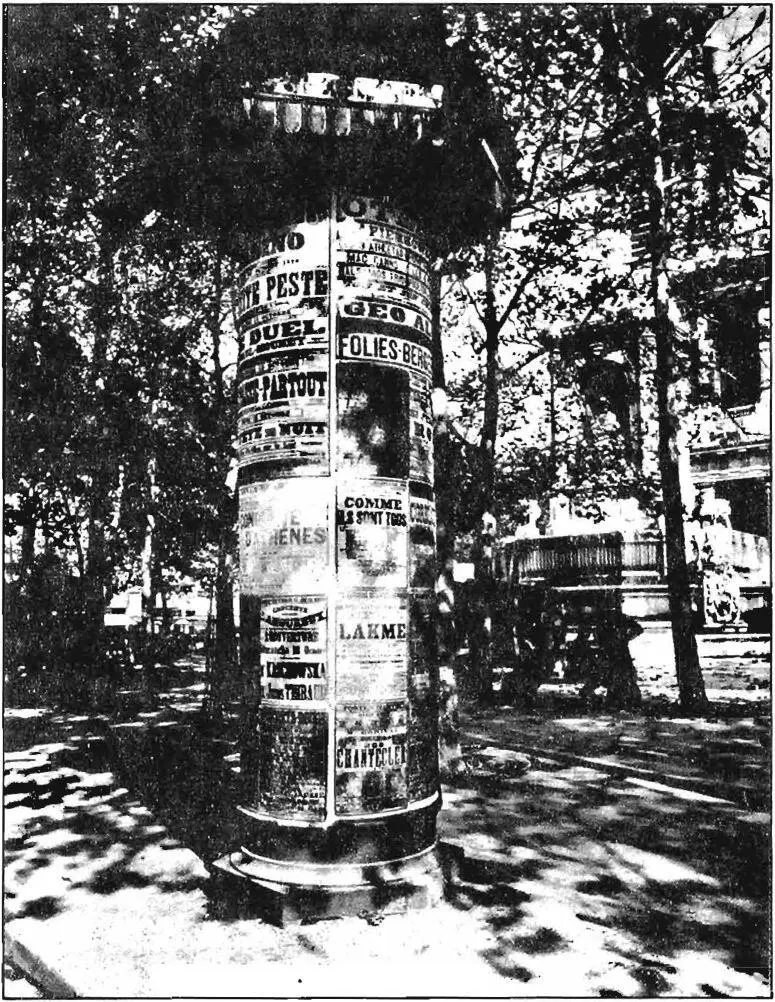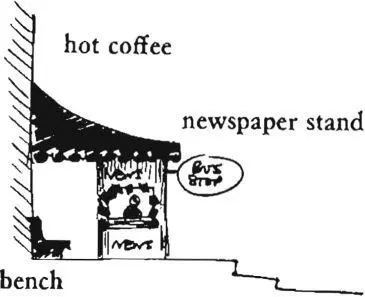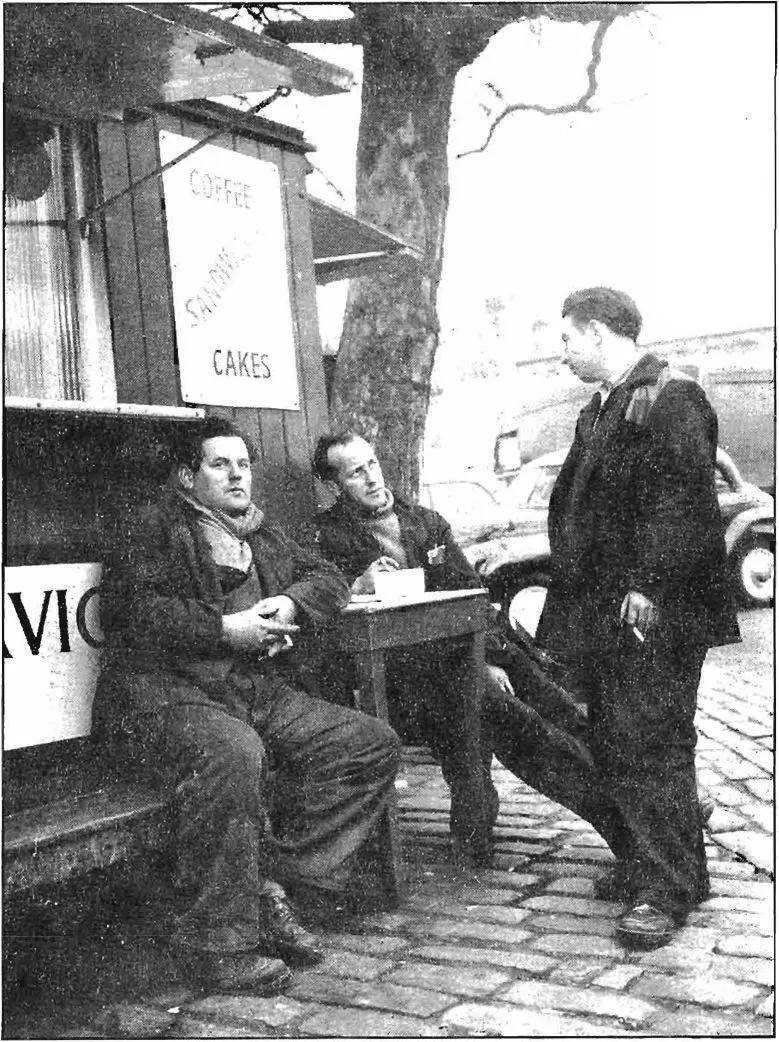Christopher alexander - A pattern language
Здесь есть возможность читать онлайн «Christopher alexander - A pattern language» весь текст электронной книги совершенно бесплатно (целиком полную версию без сокращений). В некоторых случаях можно слушать аудио, скачать через торрент в формате fb2 и присутствует краткое содержание. Жанр: Прочая научная литература, на английском языке. Описание произведения, (предисловие) а так же отзывы посетителей доступны на портале библиотеки ЛибКат.
- Название:A pattern language
- Автор:
- Жанр:
- Год:неизвестен
- ISBN:нет данных
- Рейтинг книги:3 / 5. Голосов: 1
-
Избранное:Добавить в избранное
- Отзывы:
-
Ваша оценка:
- 60
- 1
- 2
- 3
- 4
- 5
A pattern language: краткое содержание, описание и аннотация
Предлагаем к чтению аннотацию, описание, краткое содержание или предисловие (зависит от того, что написал сам автор книги «A pattern language»). Если вы не нашли необходимую информацию о книге — напишите в комментариях, мы постараемся отыскать её.
A pattern language — читать онлайн бесплатно полную книгу (весь текст) целиком
Ниже представлен текст книги, разбитый по страницам. Система сохранения места последней прочитанной страницы, позволяет с удобством читать онлайн бесплатно книгу «A pattern language», без необходимости каждый раз заново искать на чём Вы остановились. Поставьте закладку, и сможете в любой момент перейти на страницу, на которой закончили чтение.
Интервал:
Закладка:
And of course, the size is crucial. The atmosphere comes mainly from the fact that the people who run the place themselves live there and treat the entire inn as their household. A family can’t handle more than 30 rooms.
Therefore:
Make the traveler’s inn a place where travelers can take rooms for the night, but where—unlike most hotels and motels—the inn draws all its energy from the community of travelers that are there any given evening. The scale is small—30 or 40 guests to an inn; meals are offered communally; there is even a large space ringed round with beds in alcoves.
| sleeping rooms and alcoves |  |
convivialitycommunal meals |
| **❖ |
The heart of the conviviality is the central area, where everyone can meet and talk and dance and drink— common areas at THE HEART(129), DANCING IN THE STREET(65), and BEER hall(90). Provide the opportunity for communal eating, not a restaurant, but common food around a common table— communal eating(147); and, over and above the individual rooms there are at least some areas where people can lie down and sleep in public unafraid— sleeping in public(94), communal sleeping(186). For the overall shape of the inn, its gardens, parking, and surroundings, begin with building complex(95). . . .
| 92 BUS STOP* |
|---|
 |
451
. . . within a town whose public transportation is based on minibuses (20), genuinely able to serve people, almost door to door, for a low price, and very fast, there need to be bus stops within a few hundred feet of every house and workplace. This pattern gives the form of the bus stops.
•i* *5* *5*
Bus stops must be easy to recognize, and pleasant, with enough activity around them to make people comfortable and safe.
Bus stops are often dreary because they are set down independently, with very little thought given to the experience of waiting there, to the relationship between the bus stop and its surroundings. They are places to stand idly, perhaps anxiously, waiting for the bus, always watching for the bus. It is a shabby experience; nothing that would encourage people to use public transportation.
The secret lies in the web of relationships that are present in the tiny system around the bus stop. If they knit together, and reinforce each other, adding choice and shape to the experience, the system is a good one: but the relationships that make up such a system are extremely subtle. For example, a system as simple as a traffic light, a curb, and street corner can be enhanced by viewing it as a distinct node of public life: people wait for the light to change, their eyes wander, perhaps they are not in such a hurry. Place a newsstand and a flower wagon at the corner and the experience becomes more coherent.
The curb and the light, the paperstand and the flowers, the awning over the shop on the corner, the change in people’s pockets—all this forms a web of mutually sustaining relationships.
The possibilities for each bus stop to become part of such a web are different—in some cases it will be right to make a system that will draw people into a private reverie—an old tree; another time one that will do the opposite—give shape to the social possibilities—a coffee stand, a canvas roof, a decent place to sit for people who are not waiting for the bus.
Two bus stofs.
Therefore:
 |
| *J* *!* «$* |
Build bus stops so that they form tiny centers of public life. Build them as part of the gateways into neighborhoods, work communities, parts of town. Locate them so that they work together with several other activities, at least a newsstand, maps, outdoor shelter, seats, and in various combinations, corner groceries, smoke shops, coffee bar, tree places, special road crossings, public bathrooms, squares. . . .
gateway
Make a full gateway to the neighborhood next to the bus stop, or place the bus stop where the best gateway is already—main gateway (53); treat the physical arrangement according to the patterns for public outdoor room (69), path shape (121), and a place to wait (150) ; provide a food stand (93): place the seats according to sun, wind protection, and view—seat spots (241). . . .
| 93 food stands* |
|---|
 |
454
. . . throughout the neighborhood there are natural public gathering places—activity nodes (30), road crossings (54), RAISED WALKS (55), SMALL PUBLIC SQUARES (6 I ) , BUS STOPS (92). All draw their life, to some extent, from the food stands, the hawkers, and the vendors who fill the street with the smell of food.
4* 4*
Many of our habits and institutions are bolstered by the fact that we can get simple, inexpensive food on the street, on the way to shopping, work, and friends.
The food stands which make the best food, and which contribute most to city life, are the smallest shacks and carts from which individual vendors sell their wares. Everyone has memories of them.
But in their place we now have shining hamburger kitchens, fried chicken shops, and pancake houses. They are chain operations, with no roots in the local community. They sell “plastic,” mass-produced frozen food, and they generate a shabby quality of life around them. They are built to attract the eye of a person driving: the signs are huge; the light is bright neon. They are insensitive to the fabric of the community. Their parking lots around them kill the public open space.
If we want food in our streets contributing to the social life of the streets, not helping to destroy it, the food stands must be made and placed accordingly.
We propose four rules:
1. The food stands are concentrated at road crossings (54) of the network of paths and cars (52). It is possible to see them from cars and to expect them at certain kinds of intersections, but they do not have special parking lots around them—see nine per cent parking (22).
2. The food stands are free to take on a character that is compatible with the neighborhood around them. They can be
455
TOWNS
to increase industrial uses in certain areas. Within the process here defined, the city could not implement this policy over the heads of the neighborhoods, by zoning or the power of eminent domain or any other actions. They can suggest that it is important, and can increase the flow of money to any neighborhoods willing to help implement this larger pattern. They can implement it, in short, if they can find local neighborhoods willing to see their own future in these terms, and willing to modify their own environment to help make it happen locally. As they find such neighborhoods, then it will happen gradually, over a period of years, as the local neighborhoods respond to the incentives.
Читать дальшеИнтервал:
Закладка:
Похожие книги на «A pattern language»
Представляем Вашему вниманию похожие книги на «A pattern language» списком для выбора. Мы отобрали схожую по названию и смыслу литературу в надежде предоставить читателям больше вариантов отыскать новые, интересные, ещё непрочитанные произведения.
Обсуждение, отзывы о книге «A pattern language» и просто собственные мнения читателей. Оставьте ваши комментарии, напишите, что Вы думаете о произведении, его смысле или главных героях. Укажите что конкретно понравилось, а что нет, и почему Вы так считаете.












